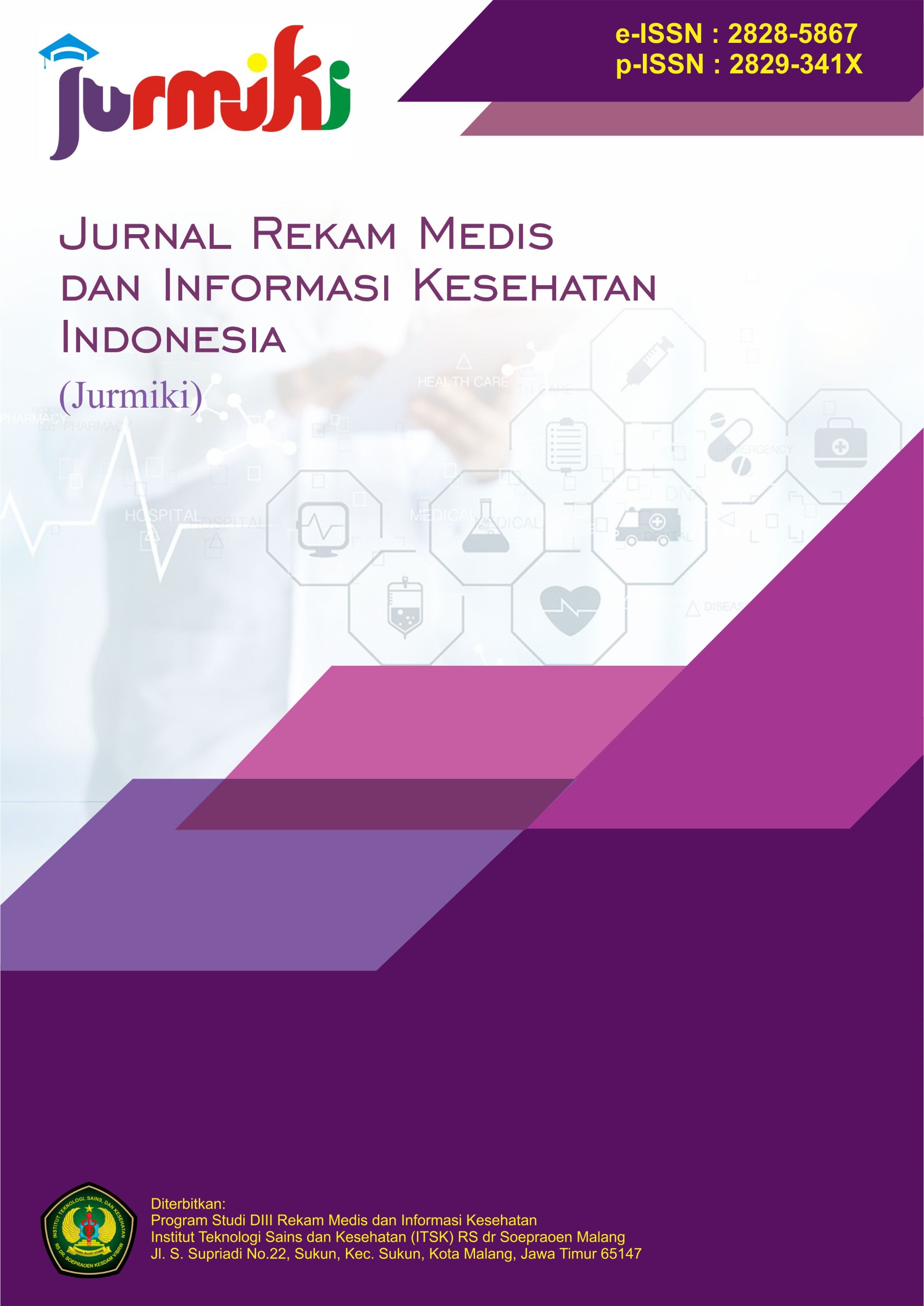Medical Record Folder Design at Mazaya Clinic Pulung District, Ponorogo Regency
DOI:
https://doi.org/10.62951/jurmiki.v4i2.103Keywords:
Medical RecordAbstract
Medical records are a critical element in health services at the Mazaya Clinic. Field observations revealed that the clinic does not yet have a medical record folder; Patient documents are only stapled sheets without classification or physical protection. This condition poses risks of document damage, data loss, privacy violations, and operational inefficiency, with search times reaching 12 minutes—far from the standards of the Ministry of Health Regulation No. 24/2022. This study aims to design an integrated medical record folder by optimizing three aspects: (1) anatomical structure, (2) physical material, and (3) content completeness.This research used the Borg & Gall Research and Development (R&D) model through four stages: Define, Design, Development, and Dissemination. The prototype was made using 310 gsm art carton laminated with matte finishing. The design was validated by experts and evaluated through field testing at the clinic. The results showed the folder increased document protection (80% moisture resistance), reduced search time by 75% (from 12 to 3 minutes), and improved data accuracy by reducing input errors by 25%. The study concludes that this folder design is a practical solution for supporting clinical accreditation, patient safety, and cost efficiency. Recommendations include technical training for staff, digital system synchronization, and data backup strategies.
References
Hartanto, D. (2019). Implementasi sistem identifikasi warna pada map rekam medis di Puskesmas ABC. Jurnal Manajemen Kesehatan, 11(2), 102–110.
Huffman, E. (1994). Health information management. W. B. Saunders Company.
Kementerian Kesehatan Republik Indonesia. (2008). Peraturan Menteri Kesehatan No. 269/Menkes/Per/III/2008 tentang rekam medis. Kemenkes RI.
Kementerian Kesehatan Republik Indonesia. (2022). Peraturan Menteri Kesehatan No. 24 Tahun 2022 tentang rekam medis elektronik. Kemenkes RI.
Purnamasari, L., & Sihombing, A. (2020). Efektivitas desain sistem informasi rekam medis terhadap akurasi data pasien. Jurnal Informasi Kesehatan Indonesia, 8(1), 45–52.
Putra, A. (2020). Pengaruh desain map rekam medis terhadap efisiensi pelayanan di klinik XYZ. Jurnal Rekam Medis dan Informasi Kesehatan, 5(1), 22–30.
Rahman, M., Syafrudin, A., & Nugroho, Y. (2021). Pemanfaatan teknologi informasi dalam pengelolaan rekam medis berbasis cloud. Jurnal Teknologi dan Sistem Informasi Kesehatan, 9(3), 117–126.
World Health Organization. (2006). Medical records manual: A guide for developing countries. WHO Press.
Wulandari, R. (2021). Analisis keberlanjutan material pada map rekam medis di Universitas Airlangga. Jurnal Desain dan Inovasi Kesehatan, 6(2), 87–93.
Downloads
Published
Issue
Section
License
Copyright (c) 2025 Jurnal Rekam Medis dan Informasi Kesehatan Indonesia

This work is licensed under a Creative Commons Attribution-ShareAlike 4.0 International License.








